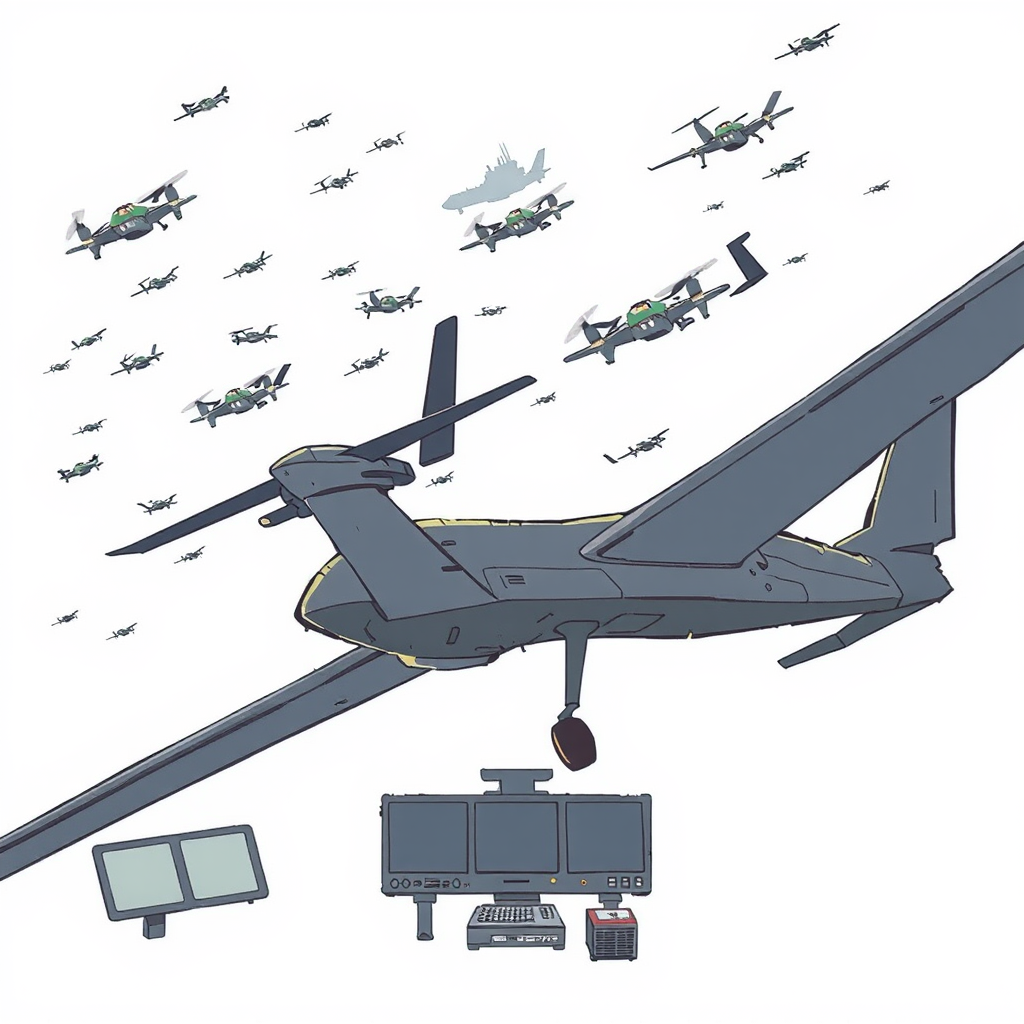China’s Drone Surge: Threatening US Air Supremacy

China is rapidly transforming its military capabilities through a significant surge in drone technology, prompting growing concern within U.S. national security circles. A recent Department of Defense report highlights that the People’s Liberation Army Air Force (PLAAF) is aggressively modernizing its aircraft and unmanned aerial systems, achieving parity with U.S. standards at an accelerating pace. This isn’t merely replication; China is demonstrably innovating, moving beyond copies of U.S. drones like the Predator and Reaper to develop its own advanced systems.
The scale of this effort is substantial. China already dominates global commercial drone production, accounting for approximately 70% of the market, and is now leveraging that manufacturing capacity, coupled with a burgeoning artificial intelligence industry, to fuel a “leap forward” in military drone technology. Experts point to a three-pronged driver for this advancement: lessons gleaned from the war in Ukraine, intensifying military competition with the U.S., and preparations for a potential conflict over Taiwan – a scenario where unmanned systems are expected to play a pivotal role.
Recent developments showcased in Chinese state media include “micro drones” – small, lightweight, and capable of carrying significant payloads – and the Jiu Tian drone carrier, billed as the world’s largest, capable of deploying and supporting up to 100 smaller drones over vast distances. This “mothership” concept, coupled with the development of “kamikaze” drones designed for direct impact, presents a complex challenge for air defense systems. The emphasis on drone swarms, in particular, is causing concern among U.S. military leaders, who recognize the difficulty of defending against coordinated attacks from numerous unmanned aerial vehicles.
China’s counter-drone capabilities are also advancing rapidly, with significant investment in electronic warfare, directed-energy weapons, and AI-driven interception systems. A recent military exercise demonstrated a 40% success rate in neutralizing incoming drones, prompting further investment and a surge in anti-drone equipment manufacturers. Over 3,000 companies are now producing counter-drone technology in China, with procurement notices increasing significantly in recent years.
While the U.S. currently maintains a technological edge in some areas, particularly high-end drones like the Reaper and Global Hawk, experts warn that China is rapidly closing the gap. The key difference lies in the speed of innovation and deployment. China’s “civil-military fusion” – the close collaboration between state enterprises and private tech firms – allows for a faster transition from research and development to battlefield use, a process often hampered by bureaucracy and lengthy procurement cycles in the U.S.
The Pentagon’s Replicator program, aimed at fielding thousands of drones next year, is a direct response to China’s advancements. However, the U.S. faces a critical challenge: maintaining its technological edge while simultaneously accelerating the deployment of new systems.
In my assessment, the situation demands a fundamental shift in U.S. defense strategy. Simply matching China’s output isn’t enough. The U.S. must prioritize innovation, streamline procurement processes, and foster a more agile defense industrial base. Furthermore, a greater emphasis on electronic warfare and counter-drone technologies is crucial to mitigating the threat posed by China’s rapidly expanding drone arsenal. The competition isn’t just about hardware; it’s about speed, adaptability, and the ability to effectively integrate new technologies into the battlefield. Failing to address these challenges could have significant implications for U.S. national security in the years to come.